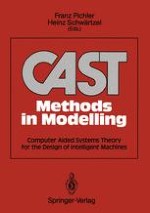Microtechnologies and their corresponding CAD tools have meanwhile reached alevel of sophistication that requires the application of theoretical means on all modelling levels of design and analysis. Also, there is a growing need for a scientific approach in modelling again. Many concepts provided by Systems Theory again turn out to be of major importance. This is especially valid for the design of "machines with intelligent behaviour". When dealing with complex systems, the engineering design has to be supported by CAD tools. Consequently, the methods of Systems Theory must also get computerized. The newly established field of "Computer Aided Systems Theory" (CAST) is a first effort in this direction. The goal of CAST research and development isto provide "Systems Theory Method Banks" which can be used in education and to provide a platform for the migration of CAST methods into existing CAD tools. This book, basing on different research and development projects in CAST, is written for engineers who are interested in using and developing CAST systems, particularly in thefield of Information and Systems Engineering.
